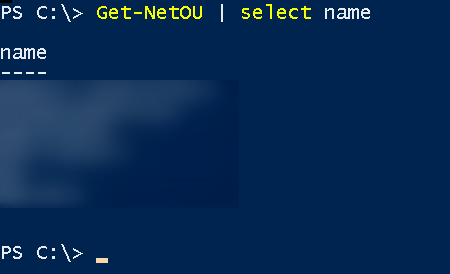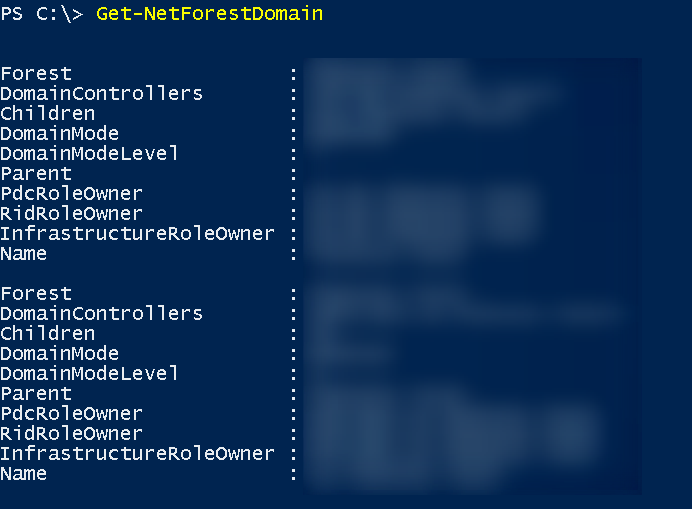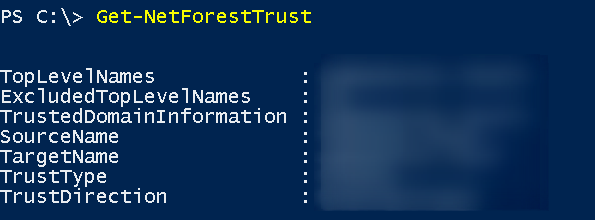Active Directory - Enumeration
Active Directory - Enumeration
Here you will find some commands to explore Active Directory and make a good Enumeration
Everything will need to know to enumerate properly it.
Hope you enjoy.
Summary
Initial Consideration
Now let’s start enumerating an Active Directory, which is the first step to be taken in any offensive activity.
The tool I will use for this section is PowerView.ps1, a script written in PowerShell that allows for quick and accurate enumeration of (almost) everything that exists within the AD environment!
Script download link
And of course, of course, I’ll hide all mentions for which environment I’m enumerating, here it’s just for didactic purposes!
Domain Enumeration
Let’s start and enumerate!
Logically after we have downloaded the script we should import it, with the command Import-Module PowerView.ps1
User Enumeration
The command to perform user enumeration within AD environment is
Get-NetUser | select Name
And here are listed all users who are registered within Active Directory.
Group Enumeration
The command to perform enumeration of groups within AD environment is
Get-NetGroup | select Name
And here are all groups within AD.
Computer Enumeration
Yes, that’s right, we can see all computers that are registered within the domain! The command for this is:
Get-NetComputer | select Name
From then on, we started to see what our possible targets are!
Domain Admins Enumeration
The command to enumerate all Domains Admins is:
Get-NetGroupMember "Domain Admins"
Enumeration of Shares
We can also check all available shares in AD, folders that we will have access to.
Invoke-ShareFinder
Enumeration of ACLs
ACLs are the permissions they have within AD, in this case each Object
Get-ObjectAcl -SamAccountName "Domain Admins"
So we check all ACLS from all groups
Get-ObjectAcl -SamAccountName "Domain Admins" -ResolveGUIDs
Enumeration of OUs
Get-NetOU select | name
Domain Trusts Enumeration
The idea now is to enumerate the trusts that our domain has in FOREST
Get-NetDomainTrust
With Get-NetForest Domain we check all domains in the current forest,
With the command Get-New Forest Trust we check the trusts of our forest
This is important because with this bidirectional trust we can also enumerate the other domain (outside of ours) in the case what appeared there in the command above
Get-NetComputer -Domain domain_showed.local | select name
These are machines accessible in another forest through the trust we have in our domain! Interesting!
USER HUNTING Enumeration
With it we check if on any machine in the domain we have local admin access (VERY NOISY)
Find-LocalAdminAccess
It didn’t work here because I don’t have administrative access on any machine with my username
Another very important function is Invoke-UserHunter, it does the same thing as Find-LocalAdminAccess
Invoke-UserHunter
It didn’t work here because I don’t have administrative access on any machine with my username
Conclusion
A good enumeration is always of utmost importance in any environment we come across. It does not end here, there is still much more to be explored, however for an initial analysis.
Resume
Summarizing what was done, first we must have the tool PowerView (https://github.com/PowerShellMafia/PowerSploit/blob/master/Recon/PowerView.ps1), so we can perform the enumeration.
Commands used.
Get-NetUser | select Name
Get-NetGroup | select Name
Get-NetComputer | select Name
Get-NetGroupMember "Domain Admins"
Invoke-ShareFinder
Get-ObjectAcl -SamAccountName "Domain Admins"
Get-ObjectAcl -SamAccountName "Domain Admins" -ResolveGUIDs
Get-NetOU select | name
Get-NetDomainTrust
Get-NetForestDomain
Get-NetForestTrust
Get-NetComputer -Domain domain_showed.local | select name
Find-LocalAdminAccess
Invoke-UserHunter
Now let’s go to MSSQL server enumeration















